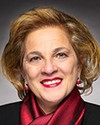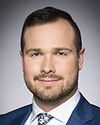Thank you, meegwetch.
Good morning, kwe.
My name is Hugo Asselin, and I'm a full professor and director of the l'École d'études autochtones at the Université du Québec en Abitibi-Témiscamingue. I have been working in collaboration with indigenous communities and organizations for nearly 20 years on a variety of topics and on a multidisciplinary and intercultural approach.
Today, I am pleased to present to you a summary of a knowledge synthesis published earlier this year and conducted by a research team of which I was a member, funded by the Fonds de recherche du Québec and conducted by my colleague Émilie Deschênes, who is also a professor at the Université du Québec en Abitibi-Témiscamingue. I have already sent you an abridged report of just under 10 pages, but if you want more details, the full 88‑page report is available free of charge through the university's institutional repository. I sent the contact information to the committee staff.
In this project, we conducted a review of written and oral data, from indigenous and non‑indigenous sources, from scientific literature and other sources, as well as transcripts of interviews of witnesses, experts and calls to action from the major commissions of inquiry in recent years. We have also had exchanges with indigenous experts in education, health and urban reality, as well as with representatives of the Government of Quebec, in connection with indigenous affairs, health, education, justice and agriculture.
Our research has been guided by three themes: issues, success factors, and inspiring practices for knowledge mobilization in indigenous public policy development. We considered all stages of the knowledge mobilization process, which is important to mention: the production and sharing of knowledge, the selection of the knowledge that will be used, its ownership and, finally, its use and mobilization in the development of public policy.
We established a diagnosis of the current situation and we defined a desired situation, based on the review of the literature and discussions with experts. With respect to the current situation, we have made four main findings, which I will summarize.
First, research knowledge flows one way, from producers to policy‑makers and then to policy recipients. Indigenous peoples, who are the recipients in this case, have few opportunities to participate in the production, selection and mobilization of knowledge. In a way, knowledge is being imposed on them.
Second, the mobilization process is primarily consultative, whereas it should be based on co‑construction. Rather than just seeking the opinion of indigenous peoples, often when it's a little too late, we have to work upstream and always with them.
Third, policy‑making is based almost exclusively on academic research knowledge. Co‑production of knowledge with indigenous communities is unfortunately still rare.
Fourth, the links between producers, users, and recipients are weak. As a result, the intermediate steps of mobilization, that is to say the sharing, selection and appropriation of knowledge, are less effective. It's more complicated.
In terms of the desired situation, we have identified a few potential solutions, which I will list for you, in no particular order. First, reciprocity, openness, cultural humility and dialogue are essential conditions without which the rest of the work cannot be done.
Next, we need to have a relationship that goes both ways, and we need to consider scientific and indigenous knowledge on an equal footing, as we heard earlier, by favouring the dual‑perspective approach. The process must be led by, for and with indigenous peoples and authorities at all stages, with a view to self‑determination—which is very important—and in compliance with the United Nations Declaration on the Rights of Indigenous Peoples. Traditional governance and consultation, research and ethics protocols developed by indigenous governments must be accommodated.
Moreover, it's not enough to simply adapt existing policies; they must be overhauled in a co‑building approach. Preventive policies that address problems at the source must also be encouraged, rather than being reactive and applying temporary solutions without preventing recurrence of problems. At the same time, it's important to look at history and context and not impose one‑size‑fits‑all solutions.
Indeed, we must not model approaches for indigenous peoples on the basis of those for other groups. You have to look at all indigenous groups as different. The approach must be inclusive and not limited to working with the chief or band council. We even have to go and see marginalized groups, such as women, the elderly and young people.
We have to take a holistic view, look at the interactions between policies and departments, assess issues in a comprehensive and long-term way. Indigenous people must be included in the staff of policy departments and included in all decision-making structures. We must provide sufficient support for initiatives at all stages of the process and always have the objective of reducing inequalities.




